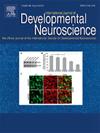Valproic Acid Exposure During the Brain Growth Spurt Leads to Autistic-Like Behaviours in Mice
Abstract
Prenatal exposure to valproic acid (VPA) has been associated with an increased risk of autism spectrum disorder (ASD). Studies in rodents have demonstrated that VPA exposure during the first trimester-equivalent period of gestation results in a lifelong autistic-like phenotype. A growing body of evidence suggests that VPA exposure may be a risk factor for ASD beyond the first trimester of pregnancy. Here, we investigated in adolescent Swiss mice the neurobehavioural effects of exposure to VPA during the brain growth spurt, a period that encompasses the third trimester of human gestation. Offspring received ip injections of VPA (200 mg/kg) or saline solution (NaCl 0.9%) on alternate days, from Postnatal Day 2 (PN2) to PN8. Animals were behaviourally tested either as juveniles (PN12: sociability [aggregation]) or adolescents (PN30: anxiety-like behaviour [elevated plus maze], locomotor activity [open field], repetitive behaviour [marble burying] and sociability [reciprocal social interaction and three-chamber test]). At PN33, serotonin serum levels and frontal cortical norepinephrine, dopamine and DOPAC were evaluated by HPLC. No differences were observed at PN12. Adolescent VPA mice showed increased anxiety-like behaviour, hyperactivity and reduced repetitive behaviour. Lower sociability was identified in the reciprocal social interaction. However, in the three-chamber test, social behaviour was higher in the VPA group. It also showed higher serotonin, but no other neurotransmitter level effects were observed. The results support the idea that the period of brain growth spurt may be relevant for the manifestation of neurobehavioural deficits associated with ASD induced by VPA.


 求助内容:
求助内容: 应助结果提醒方式:
应助结果提醒方式:


